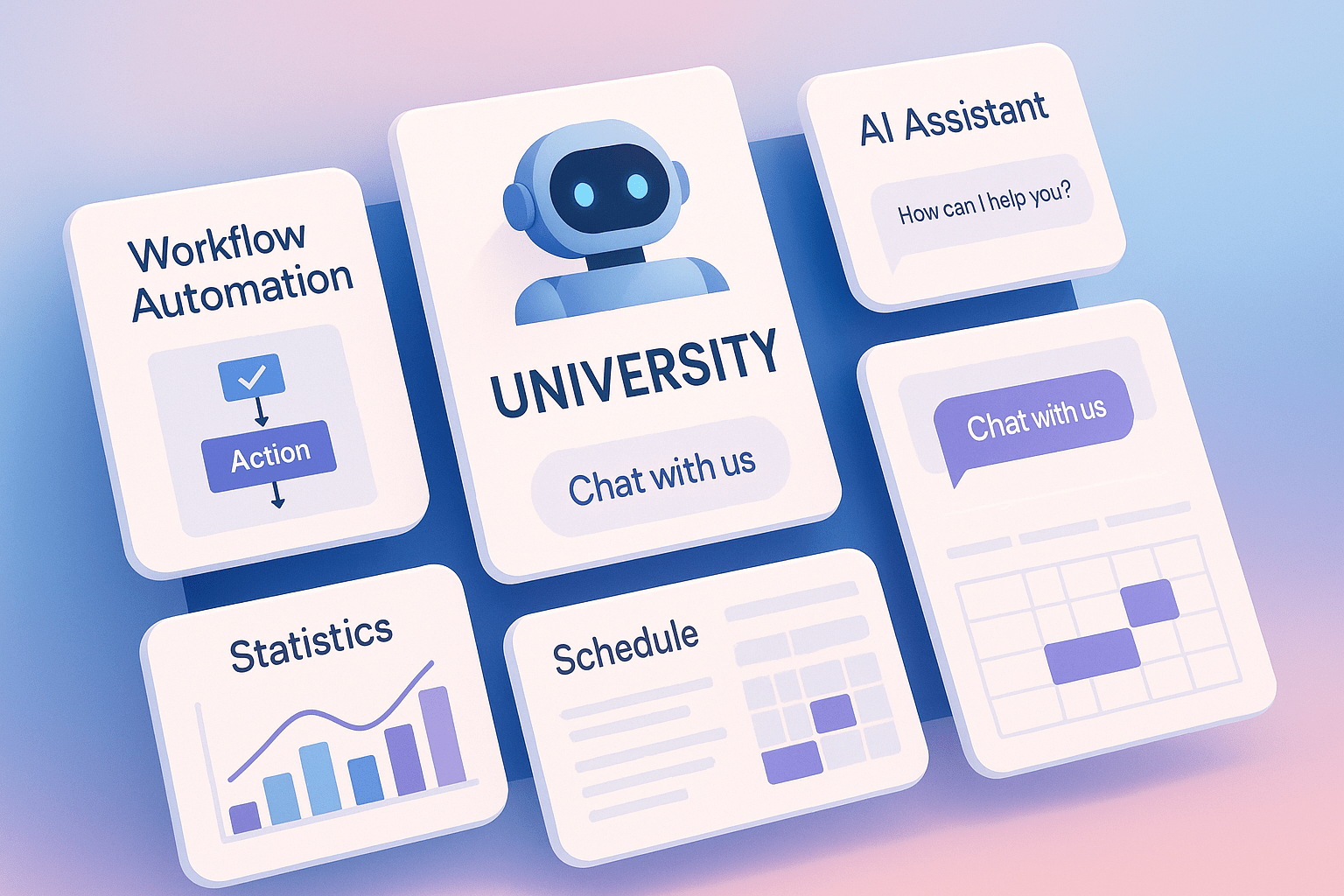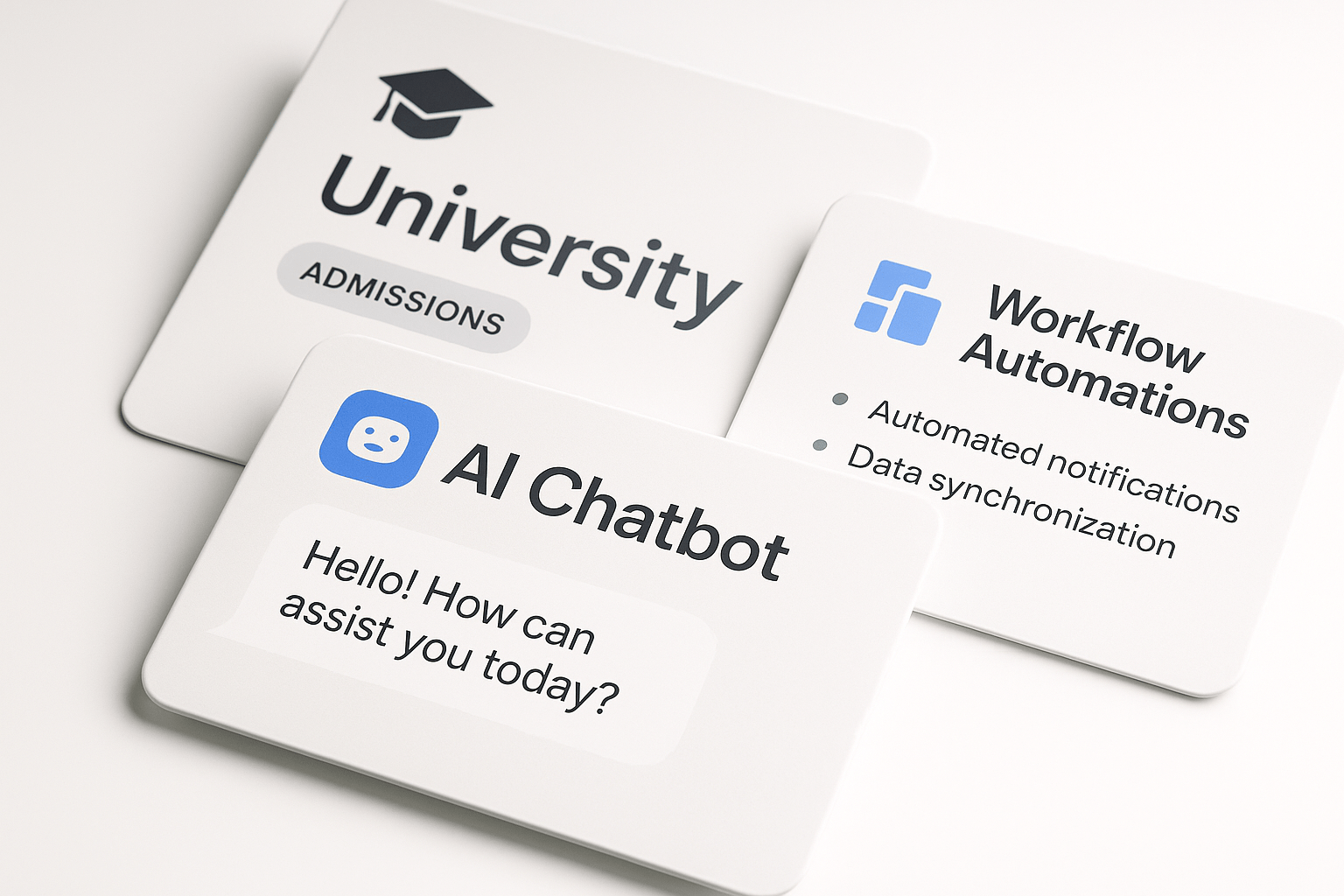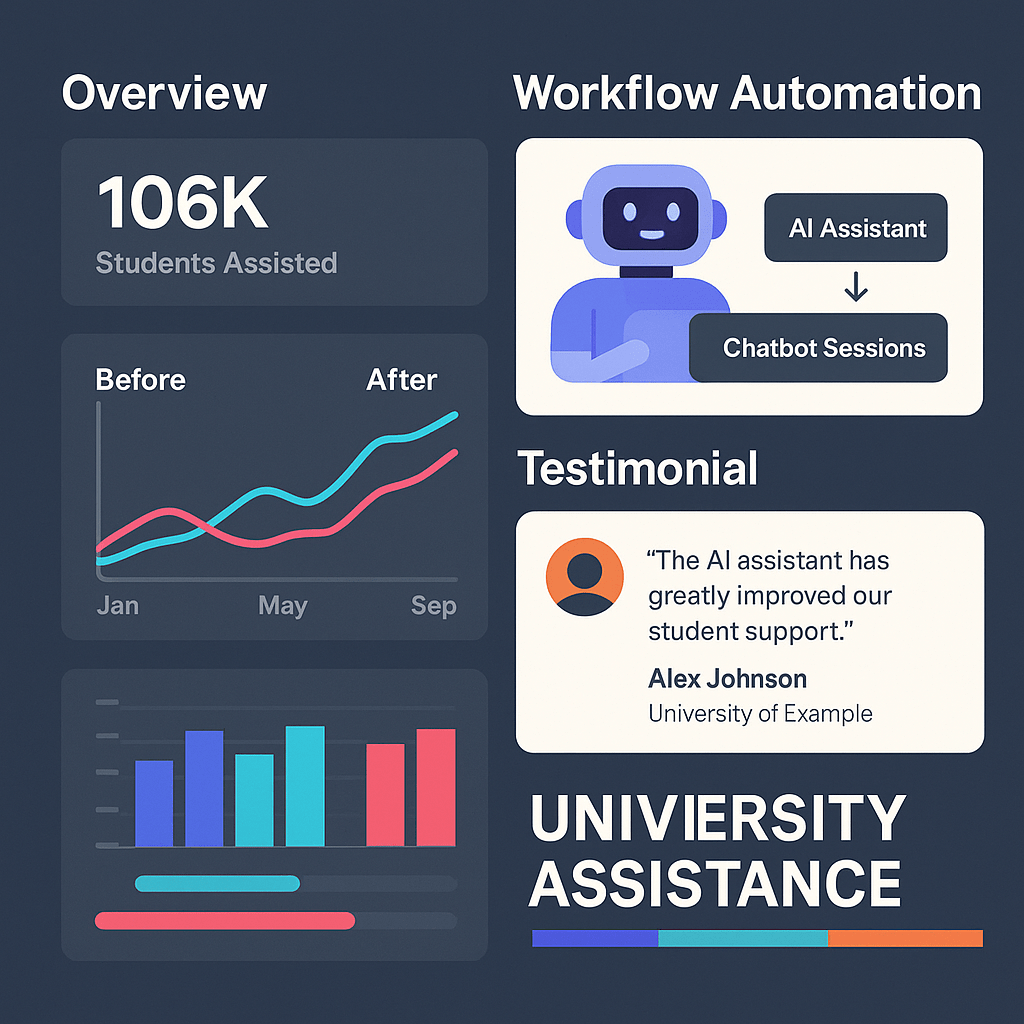The Future of Automation in Universities
by Design Delulu Editorial · September 17, 2025

Universities worldwide are facing unprecedented challenges in the digital age. From managing increasing student populations to streamlining administrative processes, higher education institutions are turning to automation as a strategic solution to enhance efficiency, improve student experience, and optimize resource allocation. This comprehensive guide explores why automation is becoming essential for universities and how institutions can leverage these technologies to transform their operations.

Why Universities Need Automation
Key Challenges Universities Face
Modern universities operate in an increasingly complex environment with multiple stakeholders and competing demands. The primary challenges include:
- Administrative Burden: Universities handle thousands of applications, enrollment processes, grade management, and student records annually. Manual processing of these tasks consumes significant time and resources while increasing the risk of human error.
- Student Support Scalability: As student populations grow, providing personalized support becomes challenging. Students expect 24/7 access to information and immediate responses to their queries, which traditional support systems struggle to deliver.
- Resource Management: Universities must optimize faculty scheduling, classroom allocation, equipment maintenance, and budget distribution across multiple departments and programs.
- Communication Gaps: Coordinating between departments, faculty, staff, and students often leads to information silos and delayed decision-making processes.
- Data Management Complexity: Universities generate vast amounts of data from student information systems, learning management systems, research databases, and administrative platforms that need integration and analysis.
How Automation Solves These Challenges
Automation addresses university challenges by streamlining repetitive processes, improving data accuracy, and enabling staff to focus on high-value activities. Automated systems can handle routine inquiries, process applications, schedule resources, and generate reports without human intervention, significantly reducing operational overhead.
Student chatbots can provide instant responses to common questions about admissions, course schedules, and campus services, improving student satisfaction while reducing staff workload. Automated workflow systems can route documents, approvals, and requests to appropriate departments, eliminating bottlenecks and ensuring consistent processing times.

Essential Features of Automation for Universities
Must-Have Tools and Workflows
- Student Information System (SIS) Integration: Automated systems should seamlessly integrate with existing SIS platforms to synchronize student data, grades, and academic progress across all university systems.
- AI-Powered Chatbots: Intelligent conversational interfaces that can handle admissions inquiries, provide course information, assist with registration processes, and offer technical support for learning management systems.
- Automated Admissions Processing: Systems that can evaluate applications against predetermined criteria, request missing documents, and provide status updates to applicants throughout the review process.
- Smart Scheduling Systems: Automated tools that optimize classroom assignments, faculty schedules, and resource allocation based on enrollment data, room capacity, and equipment requirements.
- Financial Aid Automation: Streamlined processes for scholarship applications, financial aid disbursement, and payment processing that reduce manual intervention and improve accuracy.
- Learning Management System (LMS) Automation: Automated grading systems, assignment distribution, and progress tracking that support both faculty and students in the educational process.
Real-World Examples
Leading universities have implemented automation solutions with measurable results. Arizona State University uses chatbots to handle over 100,000 student inquiries annually, reducing response times from hours to seconds. Georgia State University's automated early alert system identifies at-risk students and triggers intervention protocols, improving retention rates by 5%.
The University of Edinburgh automated its course enrollment process, reducing administrative time by 60% and eliminating enrollment conflicts. Meanwhile, Stanford University uses automated research grant management systems to track funding opportunities and streamline application processes for faculty members.

Common Mistakes to Avoid
Typical Pitfalls in University Automation
- Over-Automation Without Human Oversight: Universities sometimes attempt to automate complex processes that require human judgment and emotional intelligence. While automation excels at routine tasks, sensitive situations like student crisis intervention or academic appeals need human involvement.
- Insufficient Change Management: Implementing automation without proper training and stakeholder buy-in leads to resistance and poor adoption rates. Staff and faculty need comprehensive training and ongoing support to effectively use new systems.
- Neglecting Data Privacy and Security: Universities handle sensitive student and research data that requires strict security protocols. Automation systems must comply with FERPA, GDPR, and other relevant regulations while maintaining robust cybersecurity measures.
- Poor System Integration: Implementing standalone automation tools without considering existing technology infrastructure creates data silos and operational inefficiencies.
- Inadequate Testing and Quality Assurance: Rushing automation deployment without thorough testing can result in system failures during critical periods like enrollment or examination periods.
How to Do Better
Successful university automation requires a strategic approach that prioritizes user experience and institutional goals. Start with pilot programs in specific departments to test and refine processes before university-wide implementation.
Invest in comprehensive training programs that help staff understand not just how to use new systems, but why automation benefits their work and the institution overall. Establish clear governance frameworks that define roles, responsibilities, and decision-making processes for automated systems.
Regularly review and optimize automated processes based on user feedback and performance metrics. Maintain human escalation pathways for complex situations that require personal attention and expertise.
SEO / Growth Best Practices
Optimization Tips Specific to Universities
Universities can leverage automation to improve their online visibility and attract prospective students. Automated content management systems can maintain consistent, up-to-date information across university websites, improving search engine rankings for relevant keywords.
Implement automated social media management to share student achievements, research breakthroughs, and campus events, increasing engagement and brand awareness. Use automation to optimize email marketing campaigns for prospective students, alumni, and donor communications.
Create automated SEO monitoring systems that track university website performance, identify optimization opportunities, and ensure compliance with accessibility standards. This helps maintain strong search rankings for competitive terms like program names, research areas, and university-specific queries.
Leveraging Automation for Visibility and Results
Automated analytics platforms can track website traffic, conversion rates, and user engagement metrics, providing insights for strategic decision-making. Universities can use this data to optimize their digital marketing efforts and improve online user experience.
Implement automated review and reputation management systems to monitor and respond to online feedback about university programs and services. This helps maintain a positive online presence and addresses concerns proactively.
Use automation to personalize prospective student communications based on their interests, academic background, and engagement level with university content. This targeted approach improves conversion rates and enhances the student recruitment process.
The Path Forward
Universities that embrace automation strategically will gain significant competitive advantages in student satisfaction, operational efficiency, and resource optimization. The key is implementing automation thoughtfully, with proper planning, training, and ongoing evaluation.
As technology continues to evolve, universities must stay informed about emerging automation opportunities while maintaining focus on their core educational mission. The most successful institutions will be those that use automation to enhance human capabilities rather than replace the personal connections that make higher education meaningful.
👉 Ready to improve your university with automation? Explore Design Delulu's Automation Services to discover how our specialized solutions can transform your institution's operations and enhance student experience.
Additional Resources
- View Our Portfolio to see automation projects we've completed for educational institutions
- Book a Consultation to discuss your university's specific automation needs
- Explore Our Tools to find resources that can support your automation journey